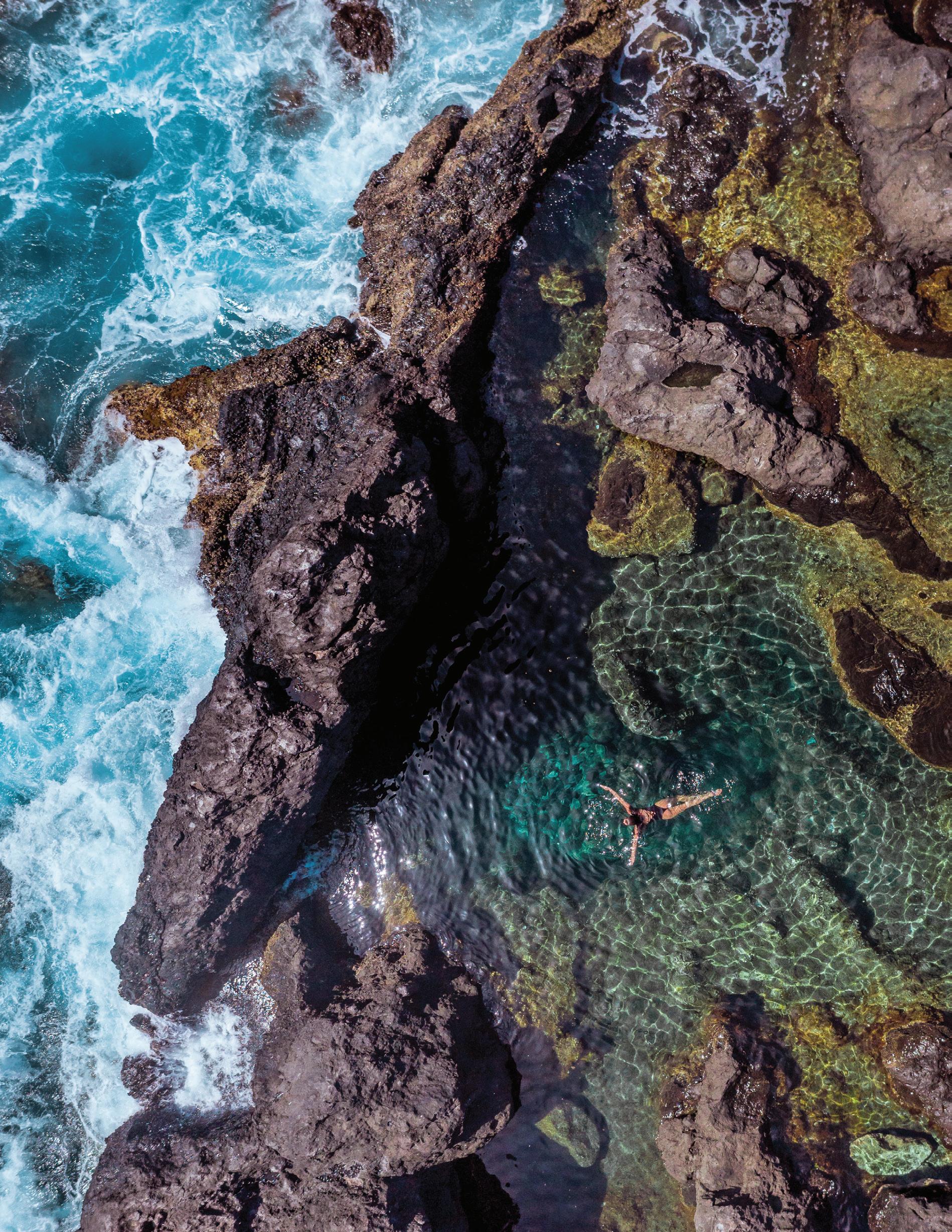
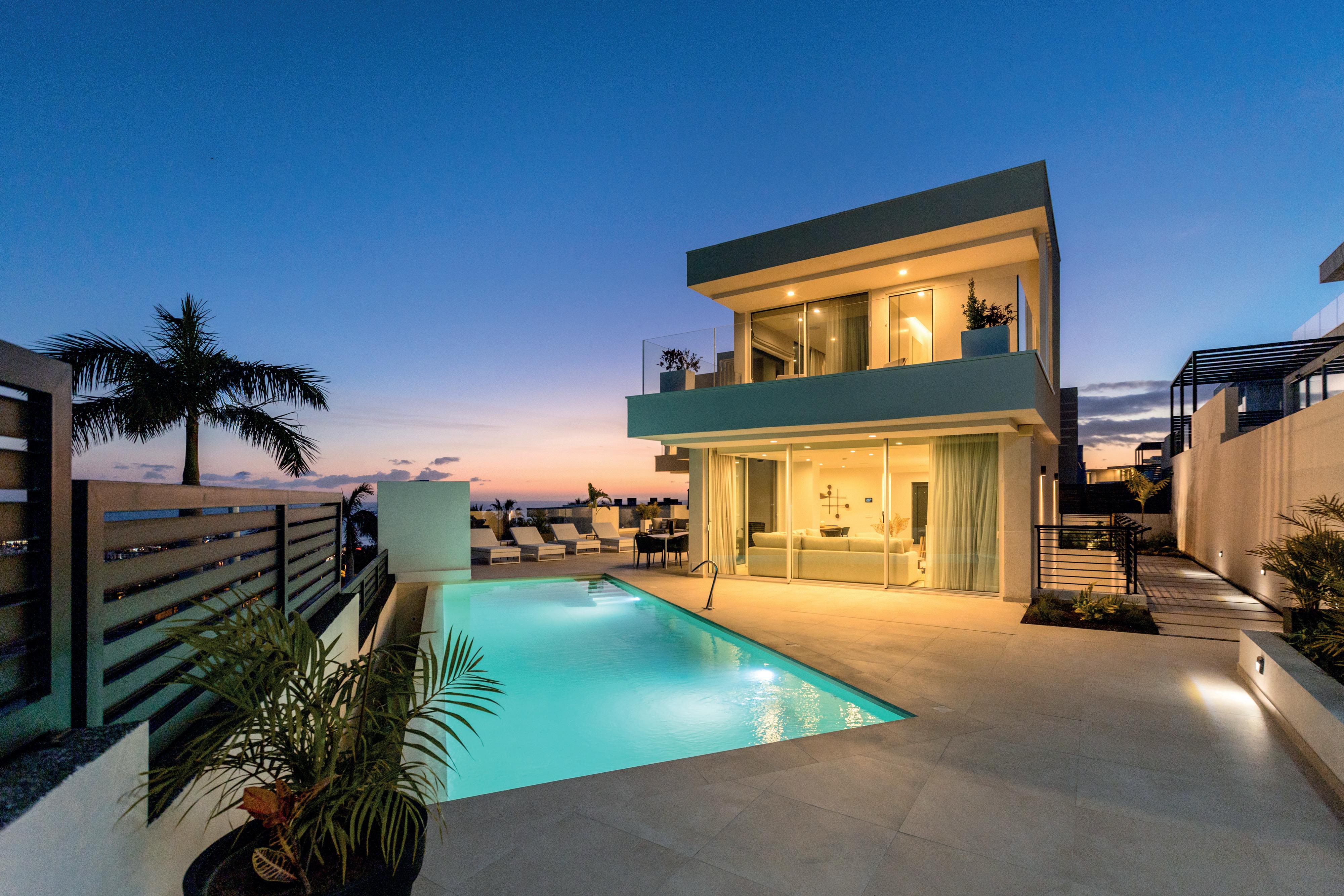







e good people of Tenerife need little excuse for a celebration. Indeed, at the last count, there were well over 500 fiestas and carnivals celebrated on the island every year, each with their own customs and traditions. e municipality of Los Realejos claims to have 80, more than anywhere else in Spain – so it’s worth knowing about the best ones. Which is where e Islander comes in. Within these pages, as well as the inside track on the best of what our resort has to offer, you’ll find a comprehensive guide to everything that is happening around the island, from whale-watching and surfing to a pioneering music festival. Elsewhere, we caught up with some of the resort’s most creative chefs to find out what sustainable gastronomy means to them. We’ve included a brief history of Tenerife (who knew about Queen guitarist Brian May’s connection to Teide Observatory?) and we meet world-renowned architect Fernando Menis, born and raised in Santa Cruz.
I have no doubt you’ll enjoy your stay at e Ritz-Carlton, Abama. You couldn’t wish for a more relaxing base.
BIENVENIDO A THE RITZ-CARLTON, ABAMA
Los tinerfeños son personas alegres que celebran la vida siempre que pueden. De hecho, según el último recuento, cada año hay en la isla más de 500 fiestas y carnavales, con sus propias costumbres y tradiciones. El municipio de Los Realejos cuenta con 80, más que ningún otro de España, por lo que merece la pena conocer los mejores, algo que trataremos de dilucidar en El Isleño. En estas páginas, además de informarle sobre lo mejor de nuestro resort, encontrará una completa guía de todo lo que ocurre en la isla, desde avistamiento de cetáceos y surf hasta un nuevo festival de música pionero. Asimismo, hablamos con algunos de los chefs más creativos del hotel para averiguar qué significa para ellos la gastronomía sostenible. Hemos incluido una breve historia de Tenerife (¡descubra la sorprendente conexión del guitarrista de Queen Brian May con el Observatorio del Teide!) y una charla con el célebre arquitecto Fernando Menis, nacido y criado en Santa Cruz.
No tengo ninguna duda de que disfrutarás de tu estancia en The Ritz-Carlton, Abama. No podrías encontrar un lugar más relajante para quedarte.

Grégory de Clerck, Director General












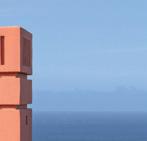
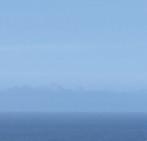













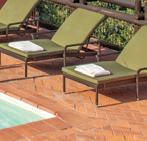










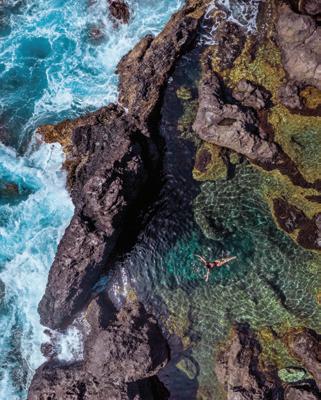
Editor | Editor
Alex Moore
Production Editor | Editor de producción
Matthew Davis
Designer | Diseñadora
Vanessa Arnaud
Project Manager | Jefa de proyecto
Sarah Glyde
Special thanks to | Agradecimientos especiales a e Ladies and Gentlemen of e Ritz-Carlton, Abama
4 KINGS OF THE OCEAN
Spot whales and dolphins in Tenerife’s turquoise waters
REYES DEL OCÉANO
Avista ballenas y delfines en las aguas turquesas de Tenerife
6 LOCAL DELICACIES
Award-winning cheese, perfect martinis, laid-back chiringuitos
DELICIAS LOCALES
Quesos galardonados, perfectos martinis y chiringuitos para relajarse
8 SPORTING MASTERCLASS
Expert golf and tennis tips
CLASE MAGISTRAL DE DEPORTE
Consejos de expertos en golf y tenis
9 BATHE LIKE A ROMAN
e benefits of a good old-fashioned spa day
BAÑOS ROMANOS
Los beneficios de un día de spa a la antigua usanza
© 2024 Uncommonly Ltd. All rights reserved. No part of this publication may be reproduced without prior permission from the publisher. While every effort has been made to ensure the accuracy of the information contained in this publication, the publisher cannot accept responsibility for any errors it may contain. For any queries regarding Uncommonly, contact Sarah Glyde: sarah@uncommonly.co.uk
© 2024 Uncommonly Ltd. Todos los derechos reservados. Ninguna parte de esta publicación puede ser reproducida sin el permiso previo del editor. Si bien se ha hecho todo lo posible para garantizar la precisión de la información contenida en esta publicación, el editor declina toda responsabilidad por los errores que pueda contener. Para cualquier consulta relacionada con Uncommonly, contacte con Sarah Glyde: sarah@uncommonly.co.uk

e paper is carbon balanced with the World Land Trust, an international conservation charity.
10 THE DALÍ OF TENERIFE
Óscar Domínguez is an artist everyone should know
EL DALÍ DE TENERIFE
Óscar Domínguez, un artista único
12 FOOD FOR THOUGHT
How our chefs are making sustainability delicious
COCINA CONSCIENTE
Por una cocina sostenible y sabrosa
14 THE HISTORY TOUR
Take a journey back in time
EL RECORRIDO HISTÓRICO
Viaje al pasado
16 ISLAND STORY
Pirates, pyramids, Poirot: the history of Tenerife
HISTORIA DE LA ISLA
Piratas, pirámides, Poirot: la historia de Tenerife
20 THE HOT LIST
Everything you need for a lazy day on the beach
OCIO
Todo lo que necesita para pasar un día de ocio en la playa
22 RIDING THE CREST
Pro surfer Laura Coviella on Tenerife’s best breaks
EN LA CRESTA DE LA OLA
La surfista profesional Laura Coviella desvela las mejores olas de Tenerife
24 THE MASTER BUILDER
Meet local starchitect Fernando Menis
EL MAESTRO DE OBRAS
Conozca al arquitecto local Fernando Menis
26 WELCOME TO THE CLUB
Staying at e Retreat is an experience in itself
BIENVENIDO AL CLUB
Alojarse en The Retreat es una experiencia en sí misma
DIARY e best events this autumn
AGENDA
Los mejores eventos de este otoño 29 THE MAGIC HOUR
An early-morning dip in Garachico
LA HORA MÁGICA
Un chapuzón mañanero en Garachico

anks to its favorable position in the Atlantic Ocean, Tenerife is one of the best places in the world to spot whales and dolphins. e narrow strait that separates the island from its smaller neighbor, La Gomera, is particularly rich in cetacean (marine mammal) life. Its waters are calm and warm, thanks to the subtropical climate, but also surprisingly deep, as is often the case in volcanic regions. ese conditions are perfect for Risso’s and bottlenose dolphins, as well as sperm and pilot whales, which inhabit these waters all year round. In winter you might also spot migratory species such as humpbacks, blue whales and even the occasional orca. Several operators in and around Costa Adeje offer ethical, sustainable whale- and dolphin-watching tours, many of which all but guarantee sightings. e only real choice lies in the type of boat – catamaran, schooner or speedboat – and, perhaps more importantly, the bay where you drop anchor for a dip.
NOVEDADES, IDEAS, DELEITES Y AVENTURAS

Gracias a su privilegiada ubicación en el océano Atlántico, Tenerife es uno de los mejores lugares del mundo para avistar ballenas y delfines. El estrecho que separa la isla de su vecina más pequeña, La Gomera, es especialmente rico en cetáceos (mamíferos marinos). Sus aguas son tranquilas y cálidas, gracias al clima subtropical, pero también sorprendentemente profundas, como suele ocurrir en las regiones volcánicas. Unas condiciones ideales para los delfines mulares y de Risso, así como para los cachalotes y calderones, que habitan estas aguas durante todo el año. En invierno se pueden avistar además especies migratorias como jorobadas, ballenas azules e incluso alguna orca.
Varios operadores de Costa Adeje y alrededores ofrecen excursiones éticas y sostenibles para avistar ballenas y delfines. La única elección real es el tipo de embarcación –catamarán, goleta o lancha rápida– y, tal vez más importante, ¡la bahía donde se echa el ancla para darse un chapuzón!
Sun, sea, sand, a cold beer and fresh fish from the grill – a meal at a chiringuito is a highlight of any holiday in Spain, whether you’re in San Sebastian or Tenerife. Some are simple beach huts with a laid-back vibe, open only in summer and serving a short menu of simple dishes; others are stylish restaurants where the sea views are accompanied by fine wines and gourmet cuisine.
Although the chiringuito is a Spanish institution, the name comes from Cuba – it derives from chiringo, the coffee served at many cafés on the Caribbean island. e word arrived in Spain in 1949, when it was used to describe a shack in Sitges, near Barcelona, and it caught on as mass tourism reached Spain in the 1960s. ere are several chiringuitos on Tenerife’s beautiful beaches, but you don’t have to leave e Ritz-Carlton, Abama to enjoy this quintessential Spanish experience. Set on the golden sands facing La Gomera island, with glorious Atlantic views, our Beach Club specializes in delicious paellas, freshly prepared fish, grilled meats and cocktails. It’s the ideal spot for a relaxed lunch – and if you can’t drag yourself off the beach, our Ladies and Gentlemen can bring food and drinks to your sunbed.
Sol, arena, mar, una cerveza bien fría y pescado fresco a la plancha: comer en un chiringuito es algo que no puede faltar en unas vacaciones en España, ya sea en San Sebastián o en Tenerife. Algunos chiringuitos son sencillas casetas de playa con un ambiente relajado, abiertos solo en verano y con una breve carta de platos sencillos; otros son elegantes restaurantes donde las vistas al mar se acompañan de buenos vinos y cocina gourmet.
Aunque el chiringuito es una institución española, su nombre procede de Cuba: deriva del chiringo, el café que se sirve en muchos cafés de la isla del Caribe.
La palabra llegó a España en 1949, cuando se utilizó para describir una chabola en Sitges, cerca de Barcelona, y se impuso con la llegada del turismo de masas a España en los años sesenta.
Hay más de una docena de chiringuitos en las playas de Tenerife, pero no tiene que salir de The Ritz-Carlton, Abama para disfrutar de esta experiencia española por excelencia. Situado en las doradas arenas frente a la isla de La Gomera, con espectaculares vistas al Atlántico, nuestro Beach Club está especializado en deliciosas paellas, pescado fresco, carnes a la parrilla y cócteles. El lugar ideal para un almuerzo relajado o, si lo prefiere, nuestro equipo de Damas y Caballeros puede servirle la comida y bebida directamente en su tumbona.


Goats have played a key role in life on Tenerife for thousands of years – there’s a goat-bathing festival in Puerto de la Cruz every June, a tradition that harks back to the Guanches era (which you can read about on page 16) – and in recent years their milk has helped the island’s artisan dairies win dozens of prizes at the prestigious World Cheese Awards.
Producers on Tenerife typically use raw, unpasteurized goat’s milk, which has a rich, creamy taste, although sheep and cow milk is sometimes added for extra flavor. e classic Canarian variety is fresco – made to be eaten fresh, pleasantly mild and slightly salty, and ideal in a lunchtime salad – but the prizewinners tend to be stronger and more complex. At Quesería Montesdeoca, for example, the champion cheeses are rolled in oregano or paprika, smoked or macerated in wine or fig, which produces a fabulous fuchsia color on the rind.
You can sample a variety of locally produced cheeses at the Agromercado farmers’ market in Adeje, but to immerse yourself in this Tenerife tradition, book a visit to Quesería Montesdeoca, a short drive from e Ritz-Carlton, Abama, where there’s a herd of more than 1,000 goats. After milking and feeding time, you’ll have a chance to watch the master cheesemakers at work – and, most important, to enjoy a tasting paired with fabulous Canary Islands wine.
For more information, please contact canarias.com or visit their stand in front of the resort’s reception.
It might not be the world’s most complicated cocktail, but there’s still an art to making a decent dry martini. According to master mixologist Javier de las Muelas, the brains behind the globally renowned Dry Martini bars (you can sample his finely crafted creations in the Lobby Bar at e Ritz-Carlton, Abama), the secret is to make it with love – and to be humble. In other words, there is no right way to make one. Just as you would ask someone how they’d like their steak cooked, it’s polite to enquire what kind of gin and vermouth they would prefer, the ratio between the two, and whether they would like a garnish. If it was up to him, Javier would pour two glasses of ice-cold Bombay Sapphire gin and “a couple of smiles” of Noilly Prat into a mixing glass with ice. He would stir it gently with a spoon for 15 seconds, shake for two seconds, then pour it into an icy cocktail glass containing a nice firm olive, ideally from Andalucía. He would serve it with a twist of lemon, on a silver tray: “Immaculate, virgin, brilliant, exactly as it’s served in the Dry Martini Bar.”
CÓMO PREPARAR EL MARTINI SECO PERFECTO
Tal vez no sea el cóctel más complicado del mundo, pero preparar un buen dry martini es todo un arte. Según el maestro coctelero Javier de las Muelas, creador y propietario de los templos Dry Martini – cuyas sublimes creaciones puede degustar en el Lobby Bar de The Ritz-Carlton, Abama – el secreto consiste en prepararlo con amor y humildad. En otras palabras, no hay una “forma correcta” de prepararlo. Igual que se pregunta a alguien el punto de cocción de la carne, es de buena educación preguntarle qué tipo de ginebra y vermú prefiere, la proporción entre ambos y si quiere alguna guarnición. Para de las Muelas no hay nada como dos vasos de ginebra Bombay Sapphire helada y un par de sonrisas de Noilly Prat en un vaso mezclador con hielo. Remover suavemente con una cuchara durante 15 segundos, agitar durante dos segundos y verter en una copa de cóctel helada con una aceituna, a poder ser de Andalucía. Servir con un toque de limón, en una bandeja de plata: «Inmaculado, virgen, brillante, exactamente como lo servimos en nuestros bares Dry Martini».
GRANDES QUESOS

Las cabras han desempeñado un papel fundamental en la vida de Tenerife desde hace miles de años. En Puerto de la Cruz se celebra cada mes de junio el tradicional baño de cabras, que se remonta a la época de los guanches (sobre la que puede leer más en p.16). En los últimos años, su leche ha permitido a las queserías artesanales de la isla ganar decenas de premios en los prestigiosos World Cheese Awards.









Los productores de Tenerife suelen utilizar leche cruda de cabra sin pasteurizar, que tiene un sabor rico y cremoso, aunque a veces se añade leche de oveja y vaca para darle un toque extra de sabor. La variedad canaria clásica es el queso fresco, suave y una pizca salado, ideal para ensaladas. Aunque las variedades premiadas son más fuertes y complejas. En Quesería Montesdeoca, por ejemplo, los quesos premiados se rebozan en orégano o pimentón, se ahúman o se maceran en vino o higo, obteniendo así el extraordinario color fucsia de la corteza.

Puede degustar una gran variedad de quesos de producción local en el mercado agrícola Agromercado de Adeje, pero, para sumergirse en esta tradición tinerfeña, lo mejor es reservar una visita a la Quesería Montesdeoca, cerca de The Ritz-Carlton, Abama, donde cuentan con un rebaño de más de 1000 cabras. Tras el ordeño y la alimentación, tendrá la oportunidad de ver trabajar a los maestros queseros y disfrutar de una deliciosa degustación maridada con un fabuloso vino canario.
Para más información, contacte con canarias.com o visite su stand frente a la recepción del hotel.



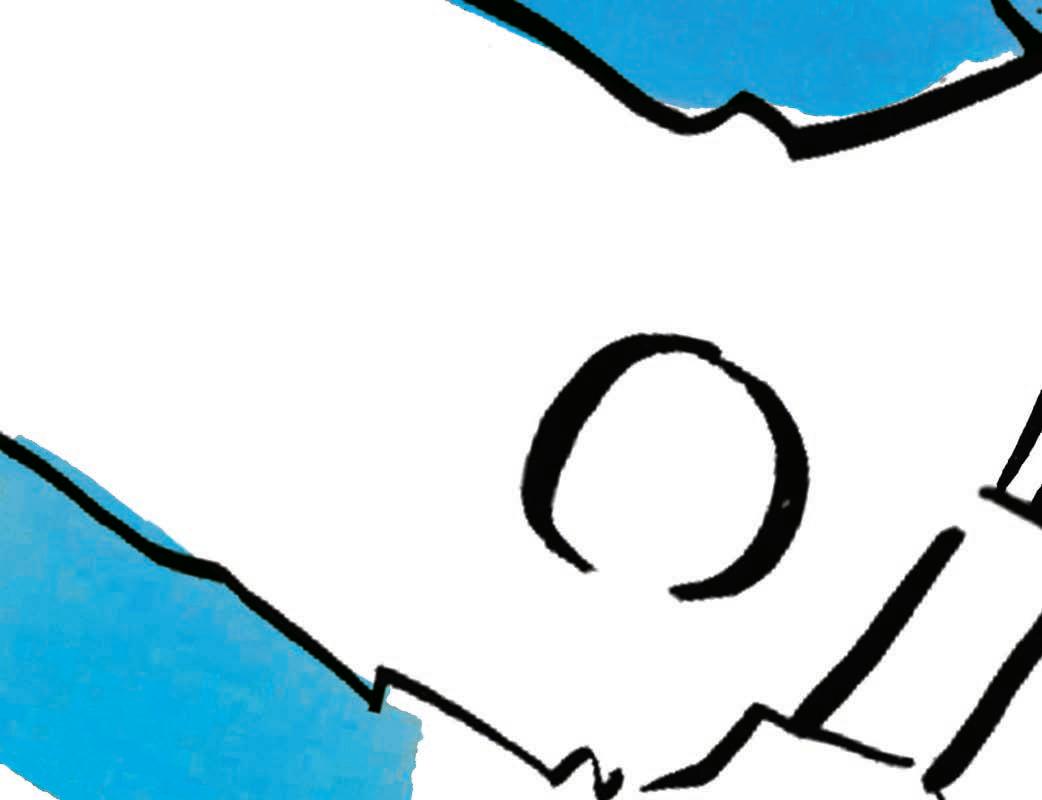

EL GOLPE EN EL TENIS
Joaquín Pérez Matos, director de Abama Tenis, explica cómo jugar el revés, un golpe magistral cuando se emplea en el momento adecuado.




e point of the drop shot is to catch out your opponent when they least expect it, especially when they have been rallying with power from






Joaquín Pérez Matos, head coach at Abama Tennis, explains how to play the drop shot – a cheeky and devastating weapon when deployed at the correct time.
Caddie’s tips :
An hour north of e Ritz-Carlton, Abama, Buenavista Golf is Tenerife’s answer to Pebble Beach. Flanked by dramatic cliffs and crashing ocean, it was designed by Seve Ballesteros – and it is notoriously tricky. Yet for all its challenges, it’s a course that players of all abilities will enjoy. Hole 10, a par 5 known as Garceta Comun (“common egret”), is one of the most spectacular – and there’s every chance of bagging a birdie here if you stay out of the sand. e fairway narrows at 245 meters, so your drive must be precise. To reach the green in one, use a wood or hybrid club – but beware of the S-shaped bunker to the left of the green. Hitting the bunkers to the right of the green would be better than shooting off the cliff behind them. e safer option is to hit an iron shot 150 meters into the center of the fairway, leaving a simple approach to the green. Well, we say simple – the wind won’t do you any favors as you try to get close to the pin.
e drop shot’s swing path is similar to a slice, but the backswing is much shorter. You need to open the face of your racquet and really swing under the ball. In doing so you hit a softer shot with more feel, applying back-spin and side-spin so the ball bounces away from your opponent.
❸ To prevent the opponent from anticipating the drop shot, the best players disguise it by faking a normal top-spin groundstroke. At the last moment they switch from their top-spin grip to a continental grip to play the shot.
For more information about tennis or golf, please contact the concierge team at RCAconcierge@ritzcarlton.com. the baseline.
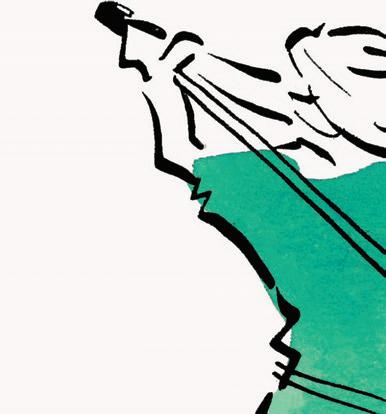




❶ El objetivo de la dejada es sorprender al rival cuando menos se lo espera, sobre todo cuando se ha recuperado con fuerza desde la línea de fondo.
❷ La trayectoria es similar a la de un slice, pero con un backswing mucho más corto. Hay que abrir la cara de la raqueta hacia arriba para cepillar la bola. De este modo, conseguirá un golpe más suave y con más tacto, aplicando efecto de revés y lateral para que la pelota bote lejos de su oponente.
❸ Para evitar que el rival se anticipe a la dejada, los mejores jugadores simulan un golpe de fondo normal con efecto desde arriba. En el último momento, cambian a una empuñadura continental para ejecutar el golpe.
Para más información sobre tenis o golf, contacte con el personal de recepción en RCAconcierge@ritzcarlton.com.
Consejos de caddie: BUENAVISTA GOLF, HOYO 10
A una hora en coche al norte de The Ritz-Carlton, Abama, Buenavista Golf es el Pebble Beach de Tenerife. Flanqueado por vertiginosos acantilados y el océano rompiente, fue diseñado por el mítico golfista Severiano Ballesteros. Es un campo complicado, con muchos hoyos tan cerca de la costa que dan la sensación de golpear contra el viento. Pese a todo, es un campo que pueden disfrutar jugadores de todos los niveles. El hoyo 10, un par 5 conocido como “garceta común”, es uno de los más espectaculares, y hay muchas posibilidades de lograr un birdie si la bola no cae en la arena. La calle comienza a estrecharse a los 245 metros, por lo que su drive debe ser preciso. Para alcanzar el green en uno, utilice una madera o un palo híbrido, pero tenga cuidado con el infame búnker en forma de S situado a la izquierda del green. Golpear los búnkeres a la derecha del green puede ser más acertado que tirar directamente al precipicio que hay detrás. La opción más segura es golpear con un hierro 150 metros hacia el centro de la calle, dejando un simple golpe de aproximación al green. Aunque simple, simple no será… ¡el viento le complicará la tarea cuando intente acercarse a la bandera!
ere are many things we have to thank the Romans for – roads, aqueducts, the modern calendar and, last but not least, spas. Known as thermae, Roman baths were designed to purify body and mind, but were also a place to relax and socialize. ey usually contained a series of rooms or “houses”, each of which provided specific health benefits. Here at e Ritz-Carlton, Abama, we took inspiration from the Romans when designing our own spa water cycle. Start in the pool – our version of the tepidarium – taking time to unwind and destress. From there, head to the hot tub, the modern equivalent of the caldarium, to reduce swelling, loosen tight muscles and improve sleep. e warm jets are especially good for lower back pain. Next, take a quick dip in the cold pool (frigidarium). is will improve circulation and boost your immune system (and libido). You’ll be pleased to hear that this also burns calories. Warm up again in the African sauna, our take on the laconicum, detoxifying your body and improving your metabolism. End the cycle in the steam room (sudatorium), which will clear congestion and leave your skin looking flawless. For good measure, fit in a Kneipp walk – not an entirely Roman practice, but good for you all the same.
For more information or reservations, please use the IRIS App or email abamaspa.reservations@ritzcarlton.com.
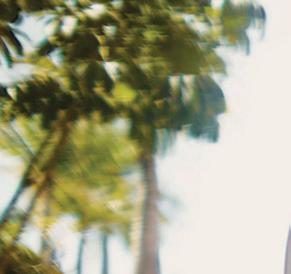

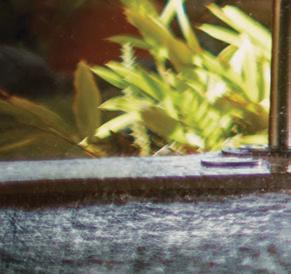






BAÑOS ROMANOS
Debemos mucho a los romanos: las carreteras, los acueductos, el calendario moderno y, por último, pero no menos importante, ¡los balnearios! Originalmente conocidas como thermae, las termas romanas estaban pensadas para purificar el cuerpo y la mente, pero también para relajarse y socializar. Solían estar formadas por una serie de habitaciones o “casas”, cada una de las cuales proporcionaba beneficios específicos para la salud. Aquí, en The Ritz-Carlton, Abama, nos inspiramos en los romanos para diseñar nuestro propio circuito termal. Empiece en la piscina – nuestra versión del tepidarium – y tómese el tiempo necesario para relajarse y desestresarse. Luego, vaya a la bañera de hidromasaje, el equivalente moderno del caldarium, que ayuda a reducir la hinchazón, soltar los músculos y mejorar la calidad del sueño. Los chorros calientes son ideales para el dolor lumbar. Después, dese un chapuzón en la piscina fría (frigidarium) para activar la circulación y estimular el sistema inmunitario (¡y la libido!). Además, también ayuda a quemar calorías. Vuelva a entrar en calor en la sauna africana, nuestra versión del laconicum, para desintoxicar el cuerpo y estimular el metabolismo. Termine el ciclo en la sala de vapor ( sudatorium), que descongestiona y deja la piel impecable. Ah! y no se olvide de andar por el pediluvio, una práctica no del todo romana, ¡pero muy beneficiosa para la salud!
Para más información o reservas, visite la aplicación IRIS o envíe un correo electrónico a abamaspa.reservations@ ritzcarlton.com.

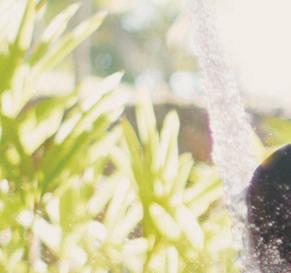


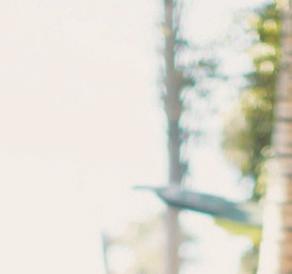


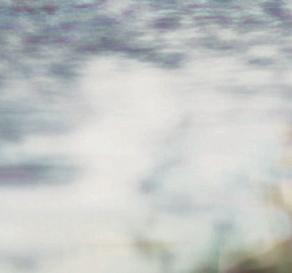



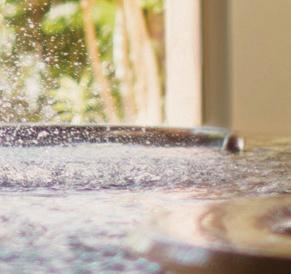









SURREALIST PAINTER ÓSCAR DOMÍNGUEZ IS THE BEST ARTIST YOU’VE NEVER HEARD OF. BORN IN TENERIFE, HE BECAME A KEY FIGURE IN THE 1930 S PARIS AVANT-GARDE, YET ALWAYS REMAINED INSPIRED BY HIS ISLAND HOMELAND

ink of Spanish Surrealists and Dalí and Joan Miró spring straight to mind. Óscar Domínguez almost certainly doesn’t – but the Tenerife-born painter and sculptor deserves to be far better known. e leading Spanish art critic and curator Juan Manuel Bonet describes him as “the third great name… Spain gave to Surrealist painting”, and his vivid, otherworldly and often provocative works can be found in the collections of the Art Institute of Chicago, the Museum of Modern Art in New York and the Bilbao Fine Arts Museum.
Born in San Cristóbal de La Laguna in 1906, Domínguez taught himself to paint while recovering from a serious bone disorder that would affect him throughout his life. He moved to Paris at the age of 21 to work for his father, a banana exporter, and immersed himself in the city’s art scene – and, inevitably, in its flamboyant nightlife. He would remain in the French capital for the rest of his life, but the raw landscapes of his homeland were a key influence – in the 1933 painting Portrait of Roma, a dragon tree is visible through the window.
Pablo Picasso and Yves Tanguy were among Domínguez’s early influences, but his big artistic breakthrough came in the early 1930s, when he met André Breton, author of the Surrealist Manifesto. He created and designed Surrealist exhibitions in Copenhagen, London and Tenerife, and is credited with introducing major artists such as Max Ernst to decalcomania. Traditionally a technique for transferring painted designs to pottery and other materials, in Domínguez’s hands it became a method for exploring the subconscious –spreading gouache paint onto a surface, then pressing it onto canvas or paper

Si hablamos de los surrealistas españoles, pensamos ante todo en Salvador Dalí y en Joan Miró. Y luego está el pintor y escultor tinerfeño Óscar Domínguez, «el tercer gran nombre que España dio a la pintura surrealista» según el principal crítico de arte español y comisario Juan Manuel Bonet. Sus obras vívidas, sobrenaturales y a menudo provocadoras, se encuentran en las colecciones del Instituto de Arte de Chicago, el Museo de Arte Moderno de Nueva York y el Museo de Bellas Artes de Bilbao. Nacido en San Cristóbal de La Laguna en 1906, Domínguez aprendió a pintar mientras se recuperaba de un grave trastorno óseo que padeció de por vida. A los 21 años se trasladó a París para trabajar con su padre, un exportador de plátanos, y entonces conoció la escena artística de la ciudad e, inevitablemente, su extravagante vida nocturna. Aunque nunca dejó ya la capital francesa, los paisajes agrestes de su tierra natal quedaron plasmados en toda su obra, como el drago que se aprecia a través de la ventana en el cuadro Retrato de Roma, de 1933. Pablo Picasso e Yves Tanguy fueron algunas de las primeras influencias de Domínguez, pero su gran avance artístico se produjo a principios de la década de 1930, cuando conoció a André Breton, autor del Manifiesto Surrealista. Creó y diseñó exposiciones surrealistas en Copenhague, Londres y Tenerife, y se le atribuye la introducción en la decalcomanía de artistas tan importantes como Max Ernst. La técnica para transferir diseños pintados a la cerámica y otros materiales se convirtió en manos de Domínguez en un método para explorar el subconsciente: extender la pintura gouache sobre una superficie y luego presionarla sobre el lienzo o el papel creaba el efecto aleatorio o “automático” distintivo del arte surrealista.

created the random or “automatic” effect that was a hallmark of Surrealist art.
Surrealism could also be disturbing and unnerving, and Domínguez embraced this dark side in works such as Le Dimanche (1935) and Machine à coudre électrosexuelle (1934-35), which sold at auction for more than $3m in 2013. e 1930s were dark times in Europe, as the Nazis tightened their grip on Germany, and his apocalyptic “cosmic” paintings capture this mood perfectly.
After the Nazi occupation of Paris in June 1940 Domínguez illustrated La Main à plume, a clandestine Surrealist journal, working alongside Picasso, Jean Arp and René Magritte. is was a dangerous business: eight people associated with La Main à plume were shot by the Nazis or died in the death camps.
His wartime friendship with Picasso saw Domínguez incorporate Cubist elements in his later work. He continued to enjoy success in the 1940s and 1950s – he designed the sets for a production of Jean-Paul Sartre’s play Les Mouches – but chronic pain from his childhood illness, and the fondness for alcohol he developed in the boîtes of Paris, led him to take his own life in 1957.
Óscar Domínguez’s grave is in Montparnasse cemetery, where he lies alongside Charles Baudelaire, Samuel Beckett, Sartre and Serge Gainsbourg, but the best place to discover his rich artistic legacy is on the island of his birth –the TEA museum in Santa Cruz holds a substantial collection of his sometimes challenging, sometimes joyous, always surprising art.
For more information about the Óscar Domínguez collection at Tenerife Espacio de las Artes (TEA), contact the concierge team at RCAconcierge@ritzcarlton.com.
El surrealismo también podía ser perturbador y desconcertante, y Domínguez abrazó este lado oscuro en obras como Le Dimanche (1935) y Machine à coudre électrosexuelle (1934-35), subastada por más de 3 millones de dólares en 2013. La década de 1930 vio a los nazis reforzar su control sobre Alemania, y las apocalípticas pinturas “cósmicas” de Domínguez captan ese estado de ánimo a la perfección.
Tras la ocupación nazi de París en junio de 1940, Domínguez ilustró La Main à plume, una revista surrealista clandestina, donde también colaboraron Picasso, Jean Arp y René Magritte. Una actividad no carente de peligro: ocho personas relacionadas con La Main à plume fueron fusiladas por los nazis o murieron en los campos de exterminio.
Gracias a su amistad con Picasso durante la guerra, Domínguez incorporó elementos cubistas a su obra posterior. Durante las décadas de 1940 y 1950 siguió cosechando grandes éxitos –se dedicó a la escenografía para una producción de la obra Les Mouches, de Jean-Paul Sartre–, pero el dolor crónico de su enfermedad y el abuso del alcohol le llevaron a quitarse la vida en 1957.
La tumba de Óscar Domínguez se encuentra en el cementerio de Montparnasse, junto a Charles Baudelaire, Samuel Beckett, Sartre y Serge Gainsbourg. Pero, sin duda, el mejor lugar para descubrir su rico legado artístico es la isla que le vio nacer: el museo TEA de Santa Cruz alberga una importante colección de su arte, a veces desafiante, a veces alegre, pero siempre sorprendente.
Para más información sobre la colección Óscar Domínguez en Tenerife Espacio de las Artes (TEA), contacte con el personal de recepción en RCAconcierge@ritzcarlton.com.

MODERN GASTRONOMY INCREASINGLY INVOLVES BALANCING ETHICAL CONSIDERATIONS WITH INNOVATIVE SOLUTIONS. HERE, CHEFS ERLANTZ GOROSTIZA (M.B), CÉSAR GONZÁLEZ (EL MIRADOR) AND JORGE DOMINGUEZ GÓMEZ (VERDE MAR)
DISCUSS THE RITZ-CARLTON, ABAMA’S FORWARD-THINKING APPROACH TO ISLAND CUISINE
consciente
What is your relationship with the island’s farmers and shermen?
EG: We recently taught some of the local fishermen a Japanese fishing technique called ike jime. As soon as a fish is caught, many chemical processes occur that can cause the meat to acquire a metallic taste – so it is important to kill the fish as quickly and painlessly as possible. Ike jime considerably improves color, flavor and texture. is method can be applied to any fish, but we’ve asked the fishermen to use it for tuna, because the bigger and stronger the fish, the more it can be affected by the secretion of lactic acid.
CG: I’m from La Orotava, in the north of Tenerife, so naturally I’ll always try to help local farmers, mainly by purchasing their produce, introducing them to other chefs and creating special menus or dishes that celebrate local ingredients.
Tell us about some of these ingredients.
JDG: Verde Mar is putting forward a concept that prioritizes seasonal, locally sourced and sustainable ingredients. Here, vegetables are the main protagonists and most come from within a kilometer of the resort. We also use an organic farm located less than five kilometers away, and one of our cheeses comes from Tijoco, about 10 kilometers away – which also supplies us with cabrito [goat meat]. Our wines and liquors are also from the Canary Islands.
EG: anks to the trade winds and year-round sun, Tenerife has 23 microclimates and we can grow up to almost 3,000 meters above sea level. We have taken advantage of this by bringing our own tropical seeds – lychees, rambutans and mangosteens – and growing them here. We’ve also brought fruit and vegetables from South America, including lucuma, which are just starting to produce fruit after eight years, and different types of herbs and chilli peppers such as huacatay and piparras, from the Basque Country, where I’m from. e piparra is a small, slightly hot bell pepper that is normally grown only in summer – but thanks to the climate here we have it all year round. Planting these seeds has reduced our carbon footprint and means our produce is far fresher. It also helps us to support the local economy.
What else are you doing to reduce your impact on the environment?
EG: We look to minimize waste by crossing recipes. If we don’t use an ingredient in its entirety when preparing a dish at M.B, for example, we try to use what’s left over at Txoko. One of the most emblematic dishes we have at M.B is the lechal veal shank cooked at low temperature. For this recipe we use the upper half of a 2.5kg shank, then we cook the rest in the traditional style at Txoko. Again, we use the apple trimmings from M.B’s pies to make an apple cream for one of Txoko’s desserts. And we use asparagus stalks as a crudité in Txoko’s wagyu chuck dish, and the tips in M.B’s warm seafood salad.
¿Cuál es su relación con los agricultores y pescadores de la isla?
EG: Hace poco enseñamos a algunos pescadores locales una técnica de pesca japonesa llamada ike jime. En cuanto se captura un pez, se producen muchos procesos químicos que pueden hacer que la carne adquiera un sabor metálico, por lo que es importante sin dolor y lo más rápido posible. Ike jime mejora considerablemente el color, el sabor y la textura del producto. Este método puede aplicarse a cualquier pescado, pero hemos pedido a los pescadores que lo utilicen para el atún, porque cuanto más grande y fuerte es el pescado, más puede verse afectado por la secreción de ácido láctico.
CG: Soy de La Orotava, en el norte de Tenerife, y siempre intento ayudar a los agricultores locales, principalmente comprando sus productos, presentándolos a otros chefs y creando menús o platos especiales que celebren los ingredientes locales.
Háblenos de algunos de estos ingredientes.
JDG: Verde Mar propone un concepto que prioriza los ingredientes de temporada, de origen local y sostenibles. Aquí, las verduras son las protagonistas y la mayoría proceden de un radio inferior a un kilómetro del complejo. También nos abastecemos en una granja ecológica situada a menos de cinco kilómetros, y uno de nuestros quesos viene de Tijoco, a unos diez kilómetros, que también nos suministra carne de cabrito. Por supuesto, nuestros vinos y licores son canarios.
EG: Gracias a los vientos alisios y al sol durante todo el año, Tenerife tiene 23 microclimas y podemos cultivar hasta casi 3000 metros sobre el nivel del mar. Es una característica que hemos aprovechado trayendo nuestras propias semillas tropicales (lichis, rambutanes y mangostanes) y cultivándolas aquí. También hemos traído frutas y verduras de Sudamérica, como la lúcuma, que apenas empieza a dar frutos al cabo de ocho años, y distintos tipos de hierbas y chiles como el huacatay y las piparras, del País Vasco, de donde soy yo. La piparra es un pimiento pequeño y picante que, si bien se cultiva solo en verano, aquí, gracias al clima, podemos disfrutarlo todo el año. Plantar estas semillas nos ha permitido reducir nuestra huella de carbono y que nuestros productos sean mucho más frescos. Y de paso contribuimos a la economía local.
¿Qué más hace para reducir su impacto en el medio ambiente?
EG: Intentamos minimizar el desperdicio cruzando recetas. Si no utilizamos un ingrediente en su totalidad al preparar un plato en M.B, por ejemplo, intentamos emplear los restos en Txoko. Uno de los platos más emblemáticos que tenemos en M.B es el jarrete de lechal cocinado a baja temperatura. Para esta receta utilizamos la mitad superior de un jarrete de 2,5 kg, el resto lo cocinamos al estilo tradicional en Txoko. Las peladuras de manzana de las tartas de M.B se emplean para la crema de manzana de uno de los postres en Txoko. Los tallos de los espárragos sirven de crudité en el plato de ternera wagyu de Txoko y las puntas en la ensalada templada de marisco de M.B.

TENERIFE IS BLESSED WITH AN ANCIENT AND FASCINATING CULTURE. HERE ARE THE BEST PLACES TO TAKE A JOURNEY BACK IN TIME
TENERIFE POSEE UNA CULTURA ANTIGUA Y FASCINANTE. VEAMOS ALGUNOS DE LOS MEJORES LUGARES PARA VIAJAR EN EL TIEMPO
1 CASTILLO DE SAN MIGUEL
GARACHICO
Built in 1575 to guard against pirate raids, this is one of the best-preserved castles on the island. Construido en 1575 para protegerse de los piratas, es uno de los castillos mejor conservados de la isla.
2 CUEVA DEL VIENTO
ICODDELOSVINOS
Guanches burial remains have been found in the Cave of the Winds – the longest lava tube in Europe. Restos funerarios guanches han sido encontrados en la Cueva de los Vientos, el tubo de lava más largo de Europa.
3 MENCEY BENTOR
MIRADORELLANCE
A poignant statue commemorating the last Guanches king, who chose to throw himself off a cliff rather than surrender to the Spanish. Estatua que conmemora al último rey guanche, que optó por arrojarse por un acantilado antes que rendirse ante los españoles.
4 CASA LERCARA
SANCRISTÓBALDELALAGUNA
e Tenerife History Museum is in this 17th-century building at the heart of Unesco-listed La Laguna.
El Museo de Historia de Tenerife se encuentra en este edificio del siglo XVII, en el corazón de La Laguna, declarada Patrimonio de la Humanidad por la Unesco.
5 MUNA
SANTACRUZDETENERIFE
Find out more about the lives and culture of the Guanches at the Museum of Nature and Archaeology. Más información sobre la vida y la cultura de los guanches en el Museo de Naturaleza y Arqueología.
6 CASTILLO DE SAN ANDRÉS
SANANDRÉS
An atmospheric ruined tower near Santa Cruz – it was damaged not by gunfire, but by flooding. Antigua fortaleza militar en ruinas, dañada no por los disparos, sino por las inundaciones.
7 CASTILLO DE SAN JUAN BAUTISTA
SANTACRUZDETENERIFE
Known as the Black Castle, this imposing fortress commands a superb position on the waterfront.
Conocido como el Castillo Negro, esta imponente fortaleza domina el paseo marítimo.
8 PIRÁMIDES DE GÜÍMAR
GÜÍMAR
Once believed to link Tenerife and ancient Latin America, these curious stepped pyramids are now thought to be unwanted farmers’ rubble. Si bien antiguamente se creía que unían Tenerife con Latinoamérica, hoy se cree que estas curiosas estructuras piramidales podrían ser montículos de piedras colocados por los agricultores.

9 CASTILLO DE SAN MIGUEL
ALDEABLANCA
Enjoy jousting, swordfights and a medieval feast at the newest castle on the island – built in 1987.
Disfrute de justas, luchas de espadas y una fiesta medieval en el castillo más nuevo de la isla, construido en 1987.
10 CASA FUERTE DE ADEJE
ADEJE
e ruins of this fortified sugar mill stand next to a pretty church in Adeje’s old town.
Antigua residencia fortificada, mezcla de casa de campo y fortaleza, junto a la bonita iglesia del casco antiguo de Adeje.
11 BRIAN MAY
OBSERVATORIODELTEIDE
e legendary Queen guitarist worked on his astrophysics degree at Teide Observatory in 1970.
El legendario guitarrista de Queen visitó el Observatorio del Teide en 1970 para su doctorado en astrofísica.
TENERIFE HAS ENJOYED AN EVENTFUL HISTORY SINCE ITS FIRST INHABITANTS ARRIVED 3,000 YEARS AGO, AND ITS CASTLES, CAVES AND COLONIAL-ERA ARCHITECTURE ARE RIPE FOR A FEW DAYS OF RELAXED EXPLORING

The Guanches
Tenerife’s original settlers came to the Canary Islands from mainland Africa c.1000BC and remained for more than two millennia. Mystery surrounds these hunter-gatherers – archaeologists are still searching for evidence in remote locations across the island – but we know that on Tenerife they wore goatskin clothes, lived in caves and simple huts, mummified their dead and believed that a demon lived on Mount Teide. (Hopefully they crammed in a bit of beach time too.)
Related to the Berber peoples of North Africa, the Guanches traded with the Phoenicians and Romans, and won high praise for their looks from travellers –in AD1150 the Arab geographer Muhammad al-Idrisi wrote about “a village whose inhabitants were often fair-haired with long and flaxen hair and the women of a rare beauty”. To find out more about this elusive civilisation, visit the MUNA museum in Tenerife or venture into the Cave of the Winds, one of the world’s longest lava tubes, where Guanches burial remains have been discovered.
e Guanches’ peaceful existence in the Canary Islands came to an abrupt end when Spanish ships arrived in the 15th century. Tenerife was the last island to fall to the invaders, after its southern kings, or menceys, gave their backing to the Spanish in 1494. e rest of the islanders put up a brave fight, but were defeated decisively in 1496 – on the north coast there’s a moving statue of their last leader, Mencey Bentor, jumping off a cliff to avoid enslavement.
The colonial era
e conquest of Tenerife coincided with the discovery of the Americas, and the island soon became a key stopping point for Spanish merchant ships heading to and from the New World. Canarian exports included bananas, sugar and wines made from the malvasia grape – Shakespeare mentions “a marvellous searching wine” that “perfumes the blood” in Henry IV Part 2 ere is a wealth of charming colonial-era architecture on Tenerife, notably in San Cristbal de la Laguna, a Unesco World Heritage Site with a street grid that inspired town planners across Latin America.
e precious goods passing in and out of Tenerife attracted the attention of pirates and British privateers – Sir Walter Raleigh captured a Spanish vessel here in 1595. Stout castles were built to repel these unwanted guests: the Castillo de San Miguel in Garachico and the Castillo de San Juan Bautista in Santa Cruz are particularly well-preserved examples. And in the 18th century the Spanish king appointed a pirate from Tenerife, Amaro Pargo, as the sinister-sounding “Lord of the Noose and Blade”, with a royal license to battle the English and Dutch.
Pirates weren’t the only threat to Tenerife: Spain was allied to France during the Napoleonic Wars, and the Royal Navy under Admiral Nelson attacked Santa Cruz in 1797. e British fired 41 cannonballs at the Castillo de Paso Alto, but missed every time – a round of grapeshot landed in the castle’s church, but miraculously failed to explode. Nelson was less fortunate: he lost his right arm after being shot during the assault.
The 20th century
e advent of the steamship and the health benefits of Tenerife’s balmy climate saw the island become a center for tourism – a 1911 Baedeker guide details “the best winter-quarters for invalids”. e queen of crime fiction, Agatha Christie, worked on the Hercule Poirot mystery e Mystery of the Blue Train during a month’s stay in 1927.


Darker days lay ahead in the 1930s, when General Franco plotted to start the Spanish Civil War after being appointed commander-general of the Canary Islands in March 1936. Ironically, he had been “banished” to Tenerife to prevent him causing trouble. After only four months, he was spirited off the island with the help of a retired British major, then flown from Gran Canaria to Morocco to start an uprising that would lead to full-blown war. A few years after Franco’s death in 1975 the Canary Islands were granted autonomous status, giving them the power to make their own laws.
The space age e observatory on the slopes of Mount Teide has played a vital role in our understanding of the universe since it was established in 1964 – its powerful telescopes have picked out several minor planets and the first known brown dwarf star. Nasa used the volcanic slopes of Teide to replicate the hostile environment of Mars while trialling the Perseverance Rover. e observatory is famous for rock stars as well as rock formations: Queen’s guitarist, Brian May, wrote one of the band’s songs on Tenerife in 1970, when he was working on his astrophysics degree.
TENERIFE HA DISFRUTADO DE UNA AGITADA HISTORIA DESDE LA LLEGADA DE SUS PRIMEROS HABITANTES HACE 3000 AÑOS. SUS CASTILLOS, CUEVAS Y ARQUITECTURA DE LA ÉPOCA COLONIAL ESTÁN LISTOS PARA UNOS DÍAS DE EXPLORACIÓN RELAJADA
Los Guanches
Los primeros pobladores de Tenerife llegaron a las Islas Canarias desde África continental hacia el año 1000 a.C. y donde permanecieron durante más de dos milenios. A día de hoy, el misterio rodea a estos cazadores-recolectores y los arqueólogos siguen buscando pruebas en lugares remotos de la isla, si bien sabemos que en Tenerife vestían ropas de piel de cabra, habitaban cuevas y chozas sencillas, momificaban a sus muertos y creían que en el Teide vivía un demonio (¡y esperemos que también disfrutaran algo de las playas!).
Emparentados con los pueblos bereberes del norte de África, los guanches comerciaron con fenicios y romanos, y fueron elogiados por su aspecto físico.
En el año 1150 d.C., el geógrafo árabe Muhammad alIdrisi escribió sobre «un pueblo cuyos habitantes solían ser rubios, de cabellos largos y lisos, y las mujeres de una belleza fuera de lo común». Para saber más sobre esta esquiva civilización, visite el museo MUNA de Tenerife o aventúrese en la Cueva del Viento, uno de los tubos de lava más largos del mundo, donde se han descubierto restos funerarios guanches.
La pacífica existencia de los guanches en las Islas Canarias terminó de manera abrupta con la llegada de los barcos españoles en el siglo XV. Tenerife fue la última isla en caer en manos de los invasores, después de que sus reyes sureños, o menceyes, apoyaran a los españoles en 1494. En la costa norte hay una conmovedora estatua de su último líder, el mencey Bentor, que saltó de un acantilado para evitar la esclavitud.
La época colonial
La conquista de Tenerife coincidió con el descubrimiento de América, y la isla pronto se convirtió en una escala ineludible para los barcos mercantes españoles que se dirigían al Nuevo Mundo. Las exportaciones canarias incluían plátanos, azúcar y vinos elaborados con uva malvasía; en palabras de Shakespeare «un vino maravilloso» que «perfuma la sangre», en Enrique IV, 2ª parte. Tenerife es rica en arquitectura colonial, sobre todo en San Cristóbal de la Laguna, declarado Patrimonio de la Humanidad por la Unesco, con un entramado de calles que inspiró a urbanistas de toda Latinoamérica.
Las valiosas mercancías que entraban y salían de Tenerife atrajeron la atención de piratas y corsarios británicos: Sir Walter Raleigh capturó aquí un navío español en 1595. Para repeler a estos huéspedes indeseados se construyeron robustos castillos: el Castillo de San Miguel, en Garachico, y el Castillo Negro, en Santa Cruz, son ejemplos particularmente bien conservados. En el siglo XVIII, el rey español nombró a un pirata tinerfeño, Amaro Pargo, “Señor de soga y cuchillo”, con licencia real para combatir a ingleses y holandeses.
Los piratas no eran la única amenaza para Tenerife: España fue aliada de Francia durante las guerras

napoleónicas, y la Royal Navy del almirante Nelson atacó Santa Cruz en 1797. Los británicos dispararon 41 balas de cañón contra el Castillo de Paso Alto, pero fallaron todas: una ráfaga de metralla cayó en la iglesia del castillo, que milagrosamente no explotó. Nelson tuvo menos suerte: perdió el brazo derecho tras recibir un disparo durante el asalto.
El siglo XX
La llegada de los barcos de vapor y los beneficios para la salud del clima templado de Tenerife convirtieron a la isla en un centro turístico: una guía Baedeker de 1911 la describe como «el mejor cuartel de invierno para inválidos». La reina de la novela negra, Agatha Christie, trabajó en El misterio del tren azul, del mítico Hércules Poirot, durante una estancia de un mes en 1927. En la década de 1930 el general Franco conspiró para iniciar la Guerra Civil española tras ser nombrado comandante general de las Islas Canarias en marzo de 1936. Irónicamente, había sido “desterrado” a Tenerife para evitar que causara problemas. Solo cuatro meses después, fue sacado de la isla con la ayuda de un mayor británico retirado y trasladado en avión desde Gran Canaria a Marruecos para iniciar una sublevación que desembocaría en la guerra civil española. Pocos años después de la muerte de Franco, en 1975, se concedió a las Islas Canarias el estatuto de autonomía, lo que les permitió promulgar sus propias leyes.
La era espacial
El observatorio situado en las laderas del Teide ha sido crucial para nuestra comprensión del universo desde su creación en 1964: sus potentes telescopios han detectado varios planetas menores y la primera estrella enana marrón conocida. La NASA utilizó las laderas volcánicas del Teide para reproducir el entorno hostil de Marte durante las pruebas del Rover Perseverance. El observatorio es famoso tanto por sus estrellas de rock como por sus formaciones rocosas: el guitarrista de Queen, Brian May, compuso una de sus canciones en Tenerife en 1970, cuando estudiaba astrofísica.
















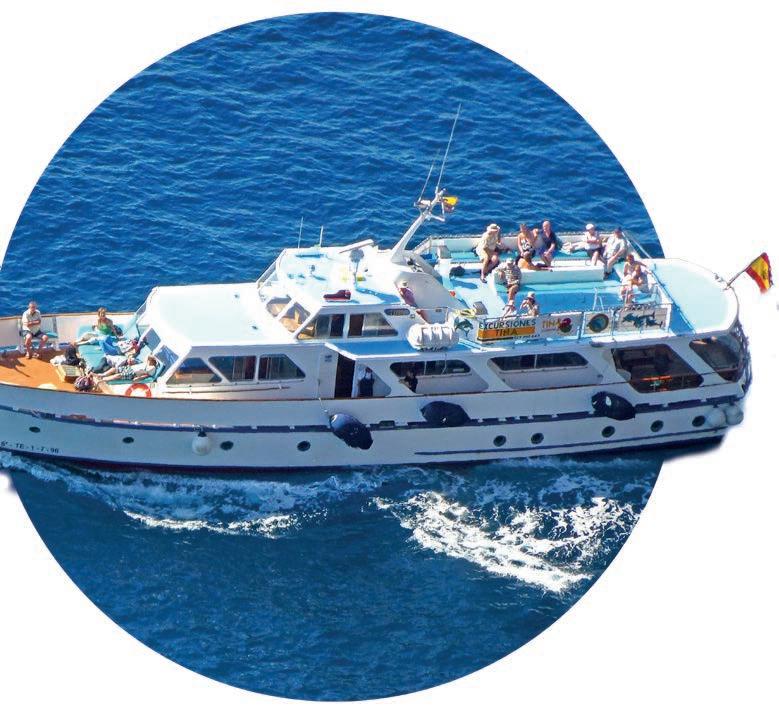










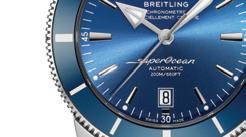







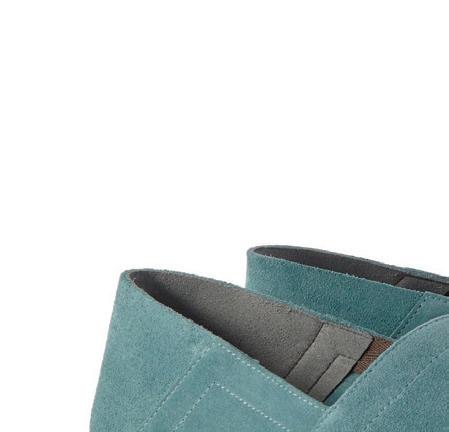







1 Basket bag in palm leaf and calfskin, LOEWE ,€480, loewe.com 2 Trancoso Beach Bat Set, FRESCOBOL CARIOCA ,€278, frescobolcarioca.com 3 Come and Get It by Kiley Reid, BLOOMSBURY , €16.92, amazon.es 4 Superocean Heritage B20 Automatic 46, BREITLING ,€4,650, breitling.com 5 Children’s short cotton print pyjamas, PETIT BATEAU , from €27, petit-bateau.es 6 Magíca Junior snorkel mask, SEAC , €50.90, kids-world.com 7 Sandals, MARC CAIN , €279, available from Eva Devine at e Ritz-Carlton, Abama 8 After Sun Lotion, DARLING ,€52, available from Eva Devine at e Ritz-Carlton, Abama 9 Leica D-Lux 7, LEICA , €1,327, leica-camera.com 10 Radiance Plunge Swimsuit, MARYAN MEHLHORN , €283, simplybeach.com 11 Barnes collapsible-heel suede espadrilles, TOM FORD ,€590, mrporter.com 12 Khaite Cat-Eye Acetate Sunglasses, OLIVER PEOPLES , €482, net-a-porter.com











PRO SURFER LAURA COVIELLA REVEALS WHERE TO CATCH THE BEST WAVES ON TENERIFE
For professional surfer Laura Coviella, 25, nowhere in the world compares to Tenerife. Since the age of 12, the home-grown talent has devoted every moment possible to hunting the island’s best waves, and in the process has become one of Europe’s most exciting big wave surfers – a vocation that has taken her around the world. But her surfing career started on these shores, in El Médano, where her family would spend the summer every year. “One day my parents just enrolled me in a surf class,” Coviella recalls. “None of my family ever surfed, but I seemed to pick it up really easily. I was hooked.”
e following summer she enrolled on a two-week surf camp run by the Fitenia Surf Shop in Santa Cruz. is crash course further cemented her love of the sport and, perhaps more importantly, introduced her to surf coach Carlos Garcia Suarez, a local legend who would spend years picking the young apprentice up from school and driving her to the best swell.
“By the time I was 14 or 15, I started to go surfing more consistently,” says Coviella. “I live in Radazul, so the closest wave is an hour by bus, which meant that by the time I got there I was always super-motivated.
“We have two amazing bays for surfing in Tenerife – Punta del Hidalgo in the north and Las Américas in the south. Both have great lefts and rights, with beach breaks in the summer and point breaks in the winter.”
While she admits to being slightly biased, there is little doubt in Coviella’s mind that Tenerife has some of the best waves in Europe. Breaks such as La Izquierda and El Charco have long captured the imagination of world-class surfers like Jonathan Gonzalez – Coviella’s biggest inspiration and a fellow Tinerfeño.
Her mastery of these waves soon caught the attention of Volcom and Red Bull, sponsors that have helped make this young surfer’s dream of going pro a reality. (She has a master’s degree in personal training “just to be on the safe side”.)
“Recently I’ve traveled a lot and surfed everywhere from Mentawai [Indonesia] to Puerto Escondido [Mexico],” grins Coviella. “And the more I travel, the more I value what we have here in the Canary Islands. e waves are so good, the weather is so good and the water is even better. Plus, the food is great and the people are amazing. I’m so grateful for what we have here.”
LA SURFISTA PROFESIONAL LAURA COVIELLA
DESVELA LAS MEJORES OLAS DE TENERIFE
Para la surfista profesional Laura Coviella, de 25 años, ningún lugar del mundo es comparable a Tenerife. Desde los 12 años, este talento local ha buscado sin tregua las mejores olas de la isla y en el proceso se ha convertido en una de las surfistas de olas grandes más increíbles de Europa, una vocación que la ha llevado a dar la vuelta al mundo en múltiples ocasiones. Su carrera de surfista comenzó en estas costas, en El Médano, donde su familia veraneaba todos los años. «Un día mis padres me apuntaron a clases de surf», recuerda Coviella. «Nadie de mi familia había surfeado nunca, pero a mí se me daba bien. Me enganché de por vida». Al verano siguiente, Coviella se apuntó a un campamento de surf de dos semanas en Fitenia Surf Shop, con sede en Santa Cruz. Este curso intensivo consolidó aún más su amor por el deporte y, sobre todo, le permitió conocer al entrenador de surf Carlos García Suárez, una leyenda local que pasaría luego años recogiendo a la joven aprendiz de la escuela para llevarla a los mejores spots. «A los 14 o 15 años empecé a ir a surfear con más regularidad», explica Coviella. «Vivo en Radazul, así que la ola más cercana está a una hora en autobús, por lo que al llegar estaba siempre impaciente y supermotivada».

«En Tenerife tenemos dos bahías increíbles para el surf», añade. «Punta del Hidalgo, en el norte, y Las Américas, en el sur. Ambas tienen grandes izquierdas y derechas; beach breaks en verano y point breaks en invierno».
Aunque admite que la tierra le tira, Coviella no duda de que Tenerife tiene algunas de las mejores olas de Europa. Breaks como La Izquierda y El Charco han cautivado durante mucho tiempo la imaginación de surfistas de renombre mundial como Jonathan González, referente de Coviella y tinerfeño como ella. Su dominio de estas mismas olas llamó pronto la atención de Volcom y Red Bull, patrocinadores que han ayudado a cumplir el sueño de la joven surfista de convertirse en profesional, quien también tiene un máster en Entrenamiento Personal, como ella dice, «por si acaso».
«Últimamente he viajado mucho y he surfeado por todas partes, desde Mentawai [Indonesia] hasta Puerto Escondido [México]», comenta con una gran sonrisa Coviella. «Y cuanto más viajo, más valoro lo que tenemos aquí en Canarias. Unas olas magníficas, un tiempo estupendo y un agua aún mejor... Además, la comida es deliciosa y la gente, increíble. Estoy muy agradecida por todo lo que tenemos en la isla».




TENERIFE-BORN ARCHITECT FERNANDO MENIS IS GLOBALLY RENOWNED FOR HIS STRIKING CONTEMPORARY STRUCTURES. HERE HE REVEALS HIS KEY INSPIRATIONS –THE ARCHITECTURAL TRADITIONS OF HIS NATIVE ISLAND AND THE ELEMENTAL POWER OF NATURE

As a child, what were your favorite buildings on Tenerife?
My favorite building as a child was the Real Casino de Tenerife in Santa Cruz, because they had an open-air cinema in summer – but also because I was impressed by the grandiose design. e whole building was a memorable presence. It was out of scale for Santa Cruz, compared to the little houses that then populated its surroundings, so you couldn’t not have it as a reference.
How would you describe the traditional architecture on Tenerife?
I think that the most important thing is its adaptation to the climate and the place, hence the importance of orientation depending on the winds, as well as the integration of patios for lighting, shade and natural ventilation. In my practice I have been observing our traditional architecture and updating and applying the solutions I have learnt from it.
What was the rst building you designed on Tenerife?
A gas station that, despite its small scale, won several awards in the Canary Islands and beyond. is helped me to realize that, from an island in the Atlantic, architecture inspired by local knowledge could be replicated and adapted in other parts of the world.
Which of your buildings in Tenerife is your favorite?
My house in the centre of Santa Cruz, because my life, my every day, unfolds in it. However, it’s hard for me not to list the Holy Redeemer Church in Las Chumberas, the Magma Art & Congress in Playa de las Américas, the Plaza España in Adeje, Drago Park in Icod de los Vinos, the Espacio Cultural El Tanque, the Presidency of the Canary Islands Government and some new houses I am designing in the Toscal area of Santa Cruz. All my projects are connected.
How might someone recognise one of your buildings without knowing you designed it?
Many of the buildings I have made resemble elements, phenomena or accidents of nature, but there are projects whose essence is more subtle, and perhaps the association with my work will not be immediate. I am referring to projects such as the floating pool on the Spree River in Berlin, the Botanical Garden La Gomera or the Banana Garden at the Espacio Cultural El Tanque. However, there are common elements: the creation or reactivation of a place, the recovery of the connection with nature, the use and redirection of the forces of nature in the building and the use of local materials.
Aside from your own, what is your favorite building on Tenerife? e building of the Canary Islands Architects’ Association in Santa Cruz, designed by Vicente Saavedra and Javier Díaz-Llanos.

EL ARQUITECTO TINERFEÑO FERNANDO MENIS ES MUNDIALMENTE CONOCIDO POR SUS SORPRENDENTES ESTRUCTURAS CONTEMPORÁNEAS. AQUÍ NOS REVELA SUS PRINCIPALES FUENTES DE INSPIRACIÓN: LAS TRADICIONES ARQUITECTÓNICAS DE SU ISLA NATAL Y LA NATURALEZA
De niño ¿cuáles eran sus edificios favoritos de Tenerife?
Mi edificio favorito de niño era el Real Casino de Tenerife, en Santa Cruz, porque tenían un cine al aire libre en verano, pero también porque me impresionaba su grandioso diseño: fuera de escala comparado con las casitas que entonces poblaban la ciudad y sus alrededores, así que resultaba imposible no tenerlo como referencia.
¿Cómo describiría la arquitectura tradicional de Tenerife?
Creo que lo más importante es su adaptación al clima y al lugar, de ahí la importancia de la orientación en función de los vientos, así como la integración de patios para iluminación, sombra y ventilación natural. En mi práctica he ido observando nuestra arquitectura tradicional y actualizando y aplicando las soluciones que he aprendido de ella.
¿Cuál fue el primer edificio que diseñó en Tenerife?
Una gasolinera que, pese a no ser muy grande, ganó varios premios en las Islas Canarias y fuera de ellas. Esto me ayudó a darme cuenta de que, desde una isla del Atlántico, la arquitectura inspirada en el conocimiento local podía replicarse y adaptarse en otras partes del mundo.
¿Cuál de sus edificios de Tenerife es su favorito?
Mi casa en el centro de Santa Cruz, porque vivo allí mi vida, mi día a día. Sin embargo, me resulta difícil no enumerar la Iglesia del Santísimo Redentor en Las Chumberas, el Magma Arte & Congresos en Playa de las Américas, la Plaza España en Adeje, el Parque del Drago en Icod de los Vinos, el Espacio Cultural El Tanque, la Presidencia del Gobierno de Canarias y algunas casas nuevas que estoy diseñando en el barrio del Toscal, en Santa Cruz. En realidad, todos mis proyectos están conectados.
¿Cómo podría alguien reconocer uno de sus edificios sin conocer su autoría?
Muchos de los edificios que he diseñado se asemejan a elementos, fenómenos o accidentes de la naturaleza, pero hay proyectos cuya esencia es más sutil, y quizá la asociación con mi obra no sea inmediata. Me refiero a proyectos como la piscina flotante en el río Spree de Berlín, el Jardín Botánico La Gomera o el Jardín de Plátanos del Espacio Cultural El Tanque. Pero siempre hay elementos comunes: la creación o reactivación de un lugar, la recuperación de la conexión con la naturaleza, la utilización y reorientación de las fuerzas de la naturaleza en la construcción y el uso de materiales locales.
Aparte del suyo, ¿cuál es su edificio favorito de Tenerife?
El edificio del Colegio de Arquitectos de Canarias en Santa Cruz, obra de Vicente Saavedra y Javier Díaz-Llanos.
Nestled at the foot of the resort, just beyond the four lanes of casitas (two lanes for families and two for adults), is a hidden sanctuary reserved exclusively for guests staying in e Retreat. Here at e Club, in the shade of palm trees and pagodas, and with glorious ocean views, hospitality is finessed to a whole new level. Service, which is anticipatory throughout e Ritz-Carlton, Abama, becomes even more personalised and Retreat guests can really make themselves truly at home.
On arrival, our Ladies and Gentlemen will show you to one of e Club’s many lounge areas overlooking the Atlantic. If champagne is not to your taste, perhaps you’d prefer to be greeted with a chilled glass of locally brewed beer or a refreshing mocktail – e Club prides itself on knowing your every preference.
Next, take a moment to get your bearings. Before you, an infinity pool reserved for guests staying in e Retreat. Beyond that, the ocean, over which the sun sets every evening. e pool nudges up against El Mirador, our clifftop restaurant specialising in seafood and every kind of paella one could imagine – here you can also enjoy breakfast, exclusive to Retreat guests. A little later in the day, help yourself to the ever-changing selection of tapas and small plates in e Kitchen, and maybe another drink from e Pantry – all of which is part of the Club experience. For anything else, please just ask.
Situado al pie del complejo, justo al final de las cuatro filas de casitas (dos filas para familias y dos para adultos), se encuentra un santuario oculto reservado exclusivamente para los huéspedes que se alojen en The Retreat. Aquí, en The Club, a la sombra de palmeras y pagodas y con magníficas vistas al mar, la hospitalidad se eleva a un nivel completamente nuevo. El servicio, que es anticipatorio en todo The Ritz-Carlton, Abama, se vuelve aún más personalizado, y los huéspedes de The Retreat pueden sentirse realmente como en casa.
A su llegada, nuestras Damas y Caballeros le acompañarán a una de las muchas áreas de descanso de The Club, con vistas al Atlántico. Si el champán no es de su gusto, quizás prefiera ser recibido con una copa fría de cerveza local artesanal o un refrescante cóctel sin alcohol; The Club se enorgullece de conocer cada una de sus preferencias.
Tras su llegada, tómese un momento para ubicarse. Frente a usted, una piscina infinita reservada para los huéspedes que se alojen en The Retreat. Más allá, el océano, sobre el cual el sol se pone cada tarde. La piscina se extiende hasta El Mirador, nuestro restaurante en la cima del acantilado especializado en mariscos y todo tipo de paellas que uno pueda imaginar; aquí también podrá disfrutar de un desayuno exclusivo para los huéspedes de The Retreat. Un poco más tarde, disfrute de la siempre cambiante selección de tapas y aperitivos en The Kitchen, y quizás otra bebida de The Pantry, todo lo cual forma parte de la experiencia en The Club. Si hay algo más que desee, no dude en solicitarlo.




















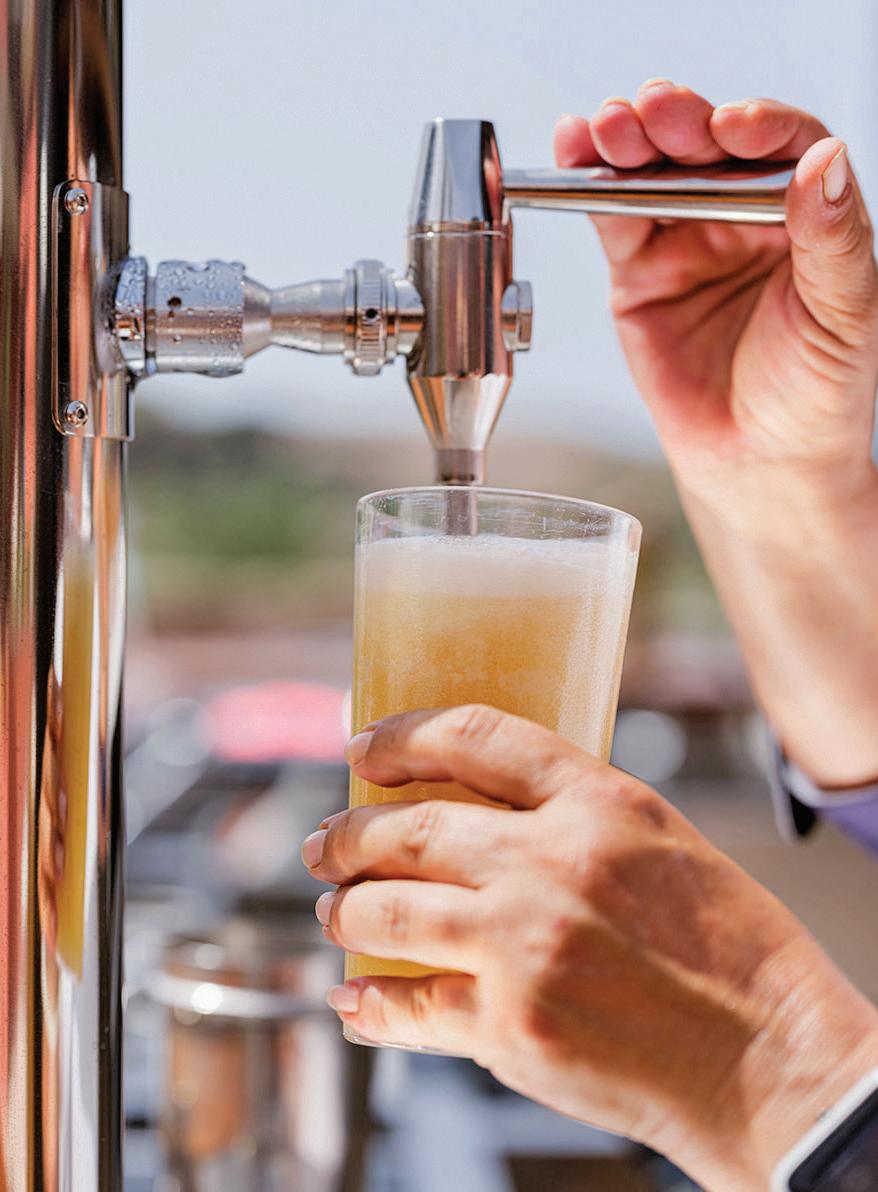


SEPTEMBER 21
Mujeres World Fest
Staged at the Costa Adeje golf course, this is a music festival with a difference – women occupy the headline slots. is year, acts to look out for include the singer-songwriter Vanesa Martín, María Peláe, who blends flamenco and pop, and the Canarian singer and rapper Sara Socas.
21 DE SEPTIEMBRE
Mujeres World Fest
Celebrado en el campo de golf de Costa Adeje, se trata de un festival de música cuyo enfoque son las mujeres artistas. Este año destacan la cantautora Vanesa Martín, María Peláe con su mezcla de flamenco y pop, y la cantante y rapera canaria Sara Socas.
UNTIL 24 NOVEMBER
Óscar Domínguez:
Two that intersect e Herzog & de Meurondesigned TEA (Tenerife Espacio de las Artes) presents a new exhibition dedicated to the Surrealist painter who grew up in the north of Tenerife. Find out more about Óscar Domínguez on page 10.
HASTA EL 24 DE NOVIEMBRE
Óscar Domínguez:
Dos que se cruzan El TEA (Tenerife Espacio de las Artes), diseñado por Herzog & de Meuron, presenta una nueva exposición dedicada al pintor surrealista originario del norte de Tenerife. Descubra más sobre Óscar Domínguez en la página 10.

NOVEMBER 29-30
Arrastre de las Tablas
Icod de los Vinos, on the island’s north coast, is famous for its malvasia wines, for its ancient dragon tree and for this quirky event in honour of the Fiesta de San Andrés. Locals spend the evening racing down the town’s steep streets on wooden trays before crashing into piles of tyres. Enjoy the fun with a glass of new wine and some freshly roasted chestnuts.
29 Y 30 DE NOVIEMBRE
Arrastre de las Tablas
Icod de los Vinos, en la costa norte de la isla, es famoso por sus vinos de malvasía, por su drago milenario y por su peculiar Fiesta de San Andrés. Los locales pasan la tarde corriendo por las empinadas calles de la ciudad en bandejas de madera antes de chocar contra montones de neumáticos. Disfrute de la diversión con una copa de vino nuevo y unas castañas recién asadas.
JANUARY 10-FEBRUARY 16
41st International Music Festival of the Canary Islands is world-class celebration of classical music is spotlighting the violin in 2025, with acclaimed soloists such as Midori, Hilary Hahn and Pinchas Zukerman performing works by Mozart, Beethoven, Mendelssohn, Sibelius and many more. e presence of leading orchestras, including the London Philharmonia and the Warsaw Symphony, ensures an unforgettable musical experience.
10 DE ENERO-16 DE FEBRERO
41 o Festival Internacional de Música de Canarias Aclamados solistas como Midori, Hilary Hahn y Pinchas Zukerman interpretarán obras de Mozart, Beethoven, Mendelssohn, Sibelius y muchos más. La presencia de orquestas destacadas, incluidas la Filarmónica de Londres y la Sinfónica de Varsovia, garantizan una experiencia musical inolvidable.
JANUARY 31-MARCH 9
Carnival of Santa Cruz Tenerife’s capital hosts the biggest carnival in the world after Rio’s, with parades, samba bands,

dancing contests and street parties. In 2019, 400,000 people gathered on Piñata Saturday, and more are expected this year, during which the theme is “Secrets of Africa”.
31 DE ENERO AL 9 DE MARZO
Carnaval de Santa Cruz
El segundo carnaval más grande del mundo, después del de Río, cuenta con desfiles, bandas de samba, concursos de baile y varias fiestas callejeras. En 2019, 400.000 personas acudieron al sábado de piñata, y con el tema “Secretos de África”, se esperan más este año.
APRIL 27
Pilgrimage of San Marcos
Join the thousands flocking to the town of Tegueste for a celebration of Canarian folklore. Expect dancing, wrestling, burning effigies, traditional dress, a carnival queen and decorative floats pulled by oxen.
27 DE ABRIL
Romería de San Marcos
Únase a la multitud que se reúne en el pueblo de Tegueste para una celebración del folclore canario con bailes, luchas, hogueras, trajes tradicionales, una reina del carnaval y carrozas decorativas tiradas por bueyes.

Garachico, on the north coast of Tenerife, was once so wealthy that one of its streets was paved with marble – legend has it that paupers were permitted to walk down it for only one day a week. Its avenues and squares were lined with palaces, haçiendas and convents – until one fateful day in 1706, when the Trevejo volcano erupted, sending rivers of lava cascading through the streets and bringing an abrupt end to Garachico’s golden age. Much of the town was buried, and its port was destroyed, but where the lava flowed into the ocean, a series of otherworldly rock pools formed. (Every cloud, as they say…) Tenerife is famous for its spectacular natural swimming pools, and the Piscinas Naturales de El Caletón in Garachico are among the best on the island. ey can get busy, especially during the summer, so arrive early, just as the sun peeps over Las Lagunetas to the east – ideally on a weekday when the tide is out. Bring goggles and a snorkel – if you manage to be first in the water, you’re all but guaranteed a good day.
La ciudad portuaria de Garachico, en la costa norte de Tenerife, fue antaño tan rica que una de sus calles estaba pavimentada con mármol; cuenta la leyenda que los pobres solo podían pasear por ella un día a la semana. Sus avenidas y plazas estaban repletas de palacios, haciendas y conventos, hasta que, un fatídico día de 1706, el cercano volcán Trevejo entró en erupción, arrojando ríos de lava por las calles y poniendo fin a la época dorada de Garachico. Gran parte de la ciudad quedó sepultada y su puerto arrasado. Pero la colada de lava que llegó hasta el océano formó unas curiosas piscinas naturales de agua de mar. Las del Caletón, en Garachico, están entre las mejores de la isla. Pueden estar muy concurridas, sobre todo en verano, así que conviene llegar pronto, justo cuando el sol se asoma por Las Lagunetas, al este, idealmente un día entre semana, con marea baja. Lleve gafas y tubo: ¡si consigue ser el primero en zambullirse podrá disfrutar de lo lindo!
